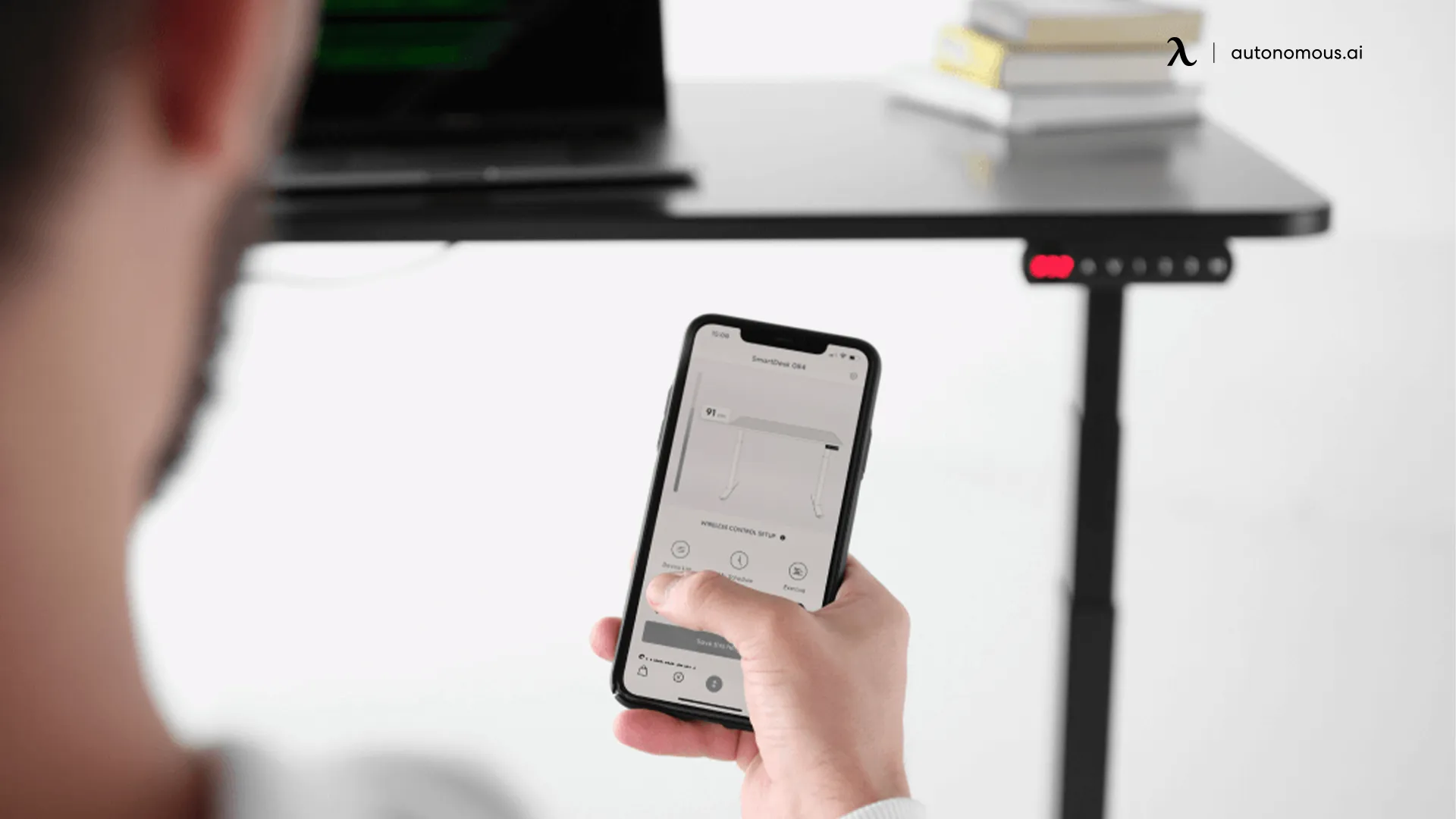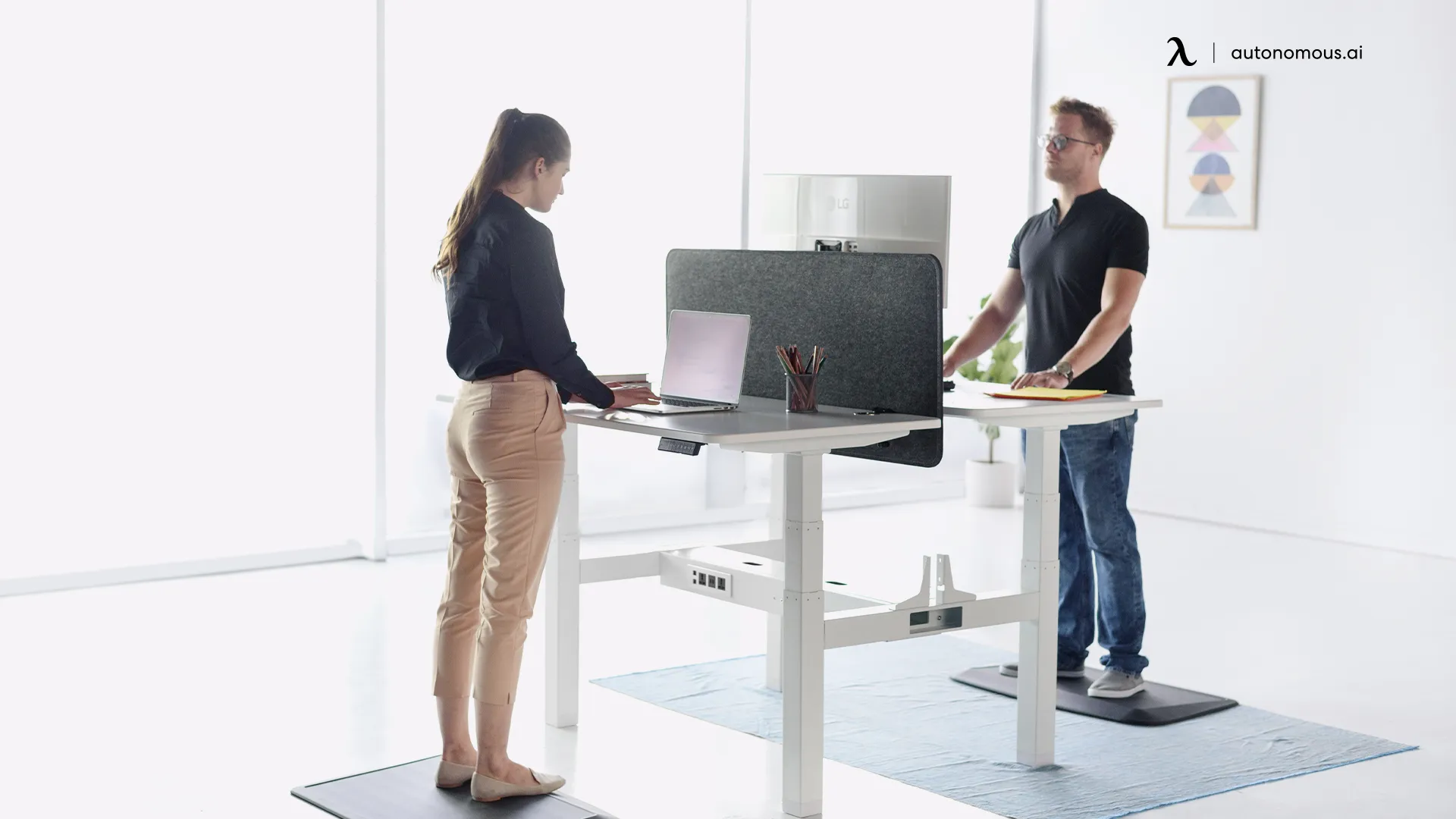.webp)
Table Height for Different Work: Writing, Typing, and More
Table of Contents
In this adventure, we'll decode the art of posture, harness ergonomic wonders, and unravel the magic of task-tailored heights. Say goodbye to discomfort and hello to a world where your workspace becomes a haven of creativity and accomplishment.
Imagine typing with ease, your body perfectly aligned in ergonomic bliss. Writing and drawing are now a source of pure joy, free from the pain of poor posture. Working at your standing desk, you feel invigorated and focused, ready to take on the day.
Welcome to a realm where desk heights aren't just measurements – they're your ticket to a higher realm of productivity. Join us on this exhilarating journey where every tweak elevates your experience, making your workspace a sanctuary of efficiency and well-being. Let's dive in and transform your work life, one adjustment at a time!
Tailoring Desk Heights for Ultimate Comfort and Performance
Whether you're a wordsmith, a digital virtuoso, an artist, or a crafting maestro, your workspace should be your sanctuary of creativity and efficiency. The secret? Desk heights tailored to your tasks. Think of it as the perfect stage setup for your daily performances. Let's dive into the art of ergonomic choreography and discover how to adjust your common desk height for every act.
- Writing Elegance: When the words flow like a river, your posture should dance harmoniously. Keep your elbows at a 90-degree angle, and forearms parallel to the ground. This graceful arrangement prevents carpal tunnel syndrome and shields you from repetitive strain injuries. A work table height of 28 to 30 inches sets the scene for your literary masterpiece.
- Typing Symphony: Your keyboard is your musical instrument, and you're the conductor. Straight wrists and relaxed shoulders are the notes to hit. An average computer desk height of 27 to 29 inches sets the tempo for your typing concerto, ensuring an ergonomic performance.
- Drawing Symphony: Creating art is a symphony of strokes and imagination. Let your arms move freely by setting a work table height of 26 to 28 inches. Feel the rhythm as you sketch, the canvas transformed into your personal stage.
- Crafting Extravaganza: Every crafting project has its spotlight moments. Lower your work table height for an intimate connection with your creation for small projects. For larger endeavors, raise the stage to ensure ample space. Your work table height becomes a dynamic set, adapting to your crafting opus.
- Standing Ovation: Standing desks steal the limelight in the world of modern workspaces. Elevate your health and productivity by adjusting the height to a stunning 38 to 42 inches. You'll be the star of your own health-conscious show.

Steps to Achieve Typical Work Desk Height
- Start with a neutral posture, setting the foundation for your performance. Feet flat, back straight, forearms parallel, and elbows at a graceful 90-degree angle.
- Tune your chair's height – a key instrument in your ensemble. Align your feet flat and knees at a 90-degree angle.
- Fine-tune the work table height, allowing your elbows to meet the 90-degree rule for writing or typing.
- Intermissions matter: Take breaks, stand up, and stretch. Your body will thank you for these refreshing pauses in your artistic performance.

Pros and Cons of Embracing an Adjustable Desk
Pros
- An ergonomic adjustable desk is a game-changer for your posture. You can customize the height to match different tasks, promoting optimal alignment and reducing strain on your body.
- Going from typing to drawing? No problem. An adjustable desk effortlessly adapts to your needs, creating a seamless shift between different activities.
- Alternate between sitting and standing to keep your blood flowing and muscles engaged. This can reduce the risk of sedentary-related issues and boost your overall well-being
- A comfortable workspace equals higher focus and efficiency. You create an environment where your work can shine by fine-tuning your desk height.
Cons:
- Quality comes at a cost. Adjustable desks tend to be pricier than traditional ones, which might make them a budget hurdle.
- Transitioning from a fixed desk to an adjustable one might take a little getting used to. Your body needs time to adjust to the new dynamic.
- While most adjustable desks cater to various heights, extremely tall or short individuals might find it challenging to find the perfect fit.

Frequently Asked Questions
1. What is the typical table height for different tasks?
Desk heights can greatly impact your comfort and performance. For writing, a height of 28 to 30 inches is ideal. Typing demands a slightly lower desk, around 27 to 29 inches. Consider a range of 26 to 28 inches when drawing for optimal creativity.
2. How can a posture chair improve my workspace experience?
A posture chair is your ally in maintaining a healthy spine alignment while working. It promotes a neutral posture, reducing strain on your back, shoulders, and neck. This ergonomic addition complements your desk height adjustments for a well-rounded comfort.
3. Are there different types of postures to consider?
Absolutely! Posture isn't one-size-fits-all. From sitting upright to standing tall, each posture has its benefits. Proper desk heights support these postures, enhancing your comfort and reducing the risk of discomfort.
4. What's the ideal standing desk height?
Standing desks are gaining popularity for their health benefits. The sweet spot for standing desk height is typically between 38 to 42 inches. This allows your elbows to rest at a 90-degree angle and your screen to meet your eyes comfortably.
5. Can standing at my desk actually burn calories?
Yes, indeed! Standing burns more calories than sitting. Engaging your muscles while standing can contribute to a higher calorie expenditure throughout the day. It's a subtle yet effective way to stay active while working.
Conclusion
The optimal work table height for various job activities might vary based on your height, the nature of the work being performed, and individual choice. It may take some experimentation to discover the ideal height for your table, but there are several basic rules that might assist. Comfort, efficiency, and well-being may all be enhanced by implementing these suggestions.
Stay connected with us!
Subscribe to our weekly updates to stay in the loop about our latest innovations and community news!
Interested in a Link Placement?
Spread the word
.svg)




/https://storage.googleapis.com/s3-autonomous-upgrade-3/production/ecm/230914/bulk-order-sep-2023-720x1200-CTA-min.jpg)

/https://storage.googleapis.com/s3-autonomous-upgrade-3/production/ecm/230824/EthanJohnson-ffebe8b4-4650-46f9-a3b3-ed980acaad86.jpg)